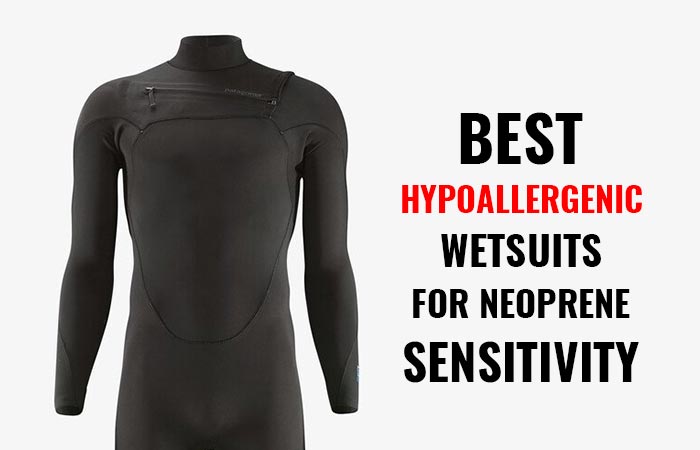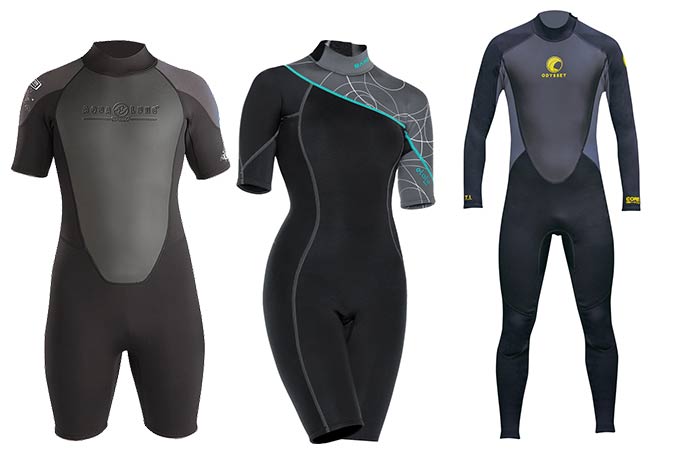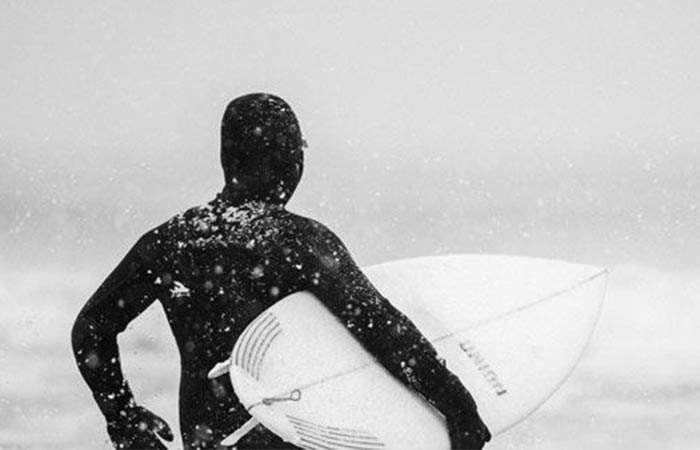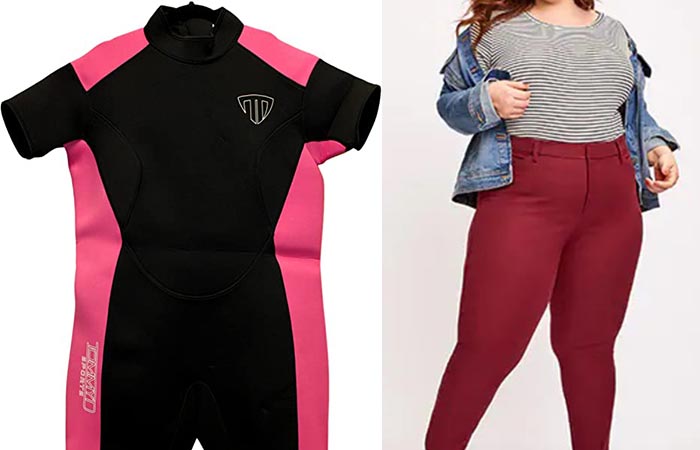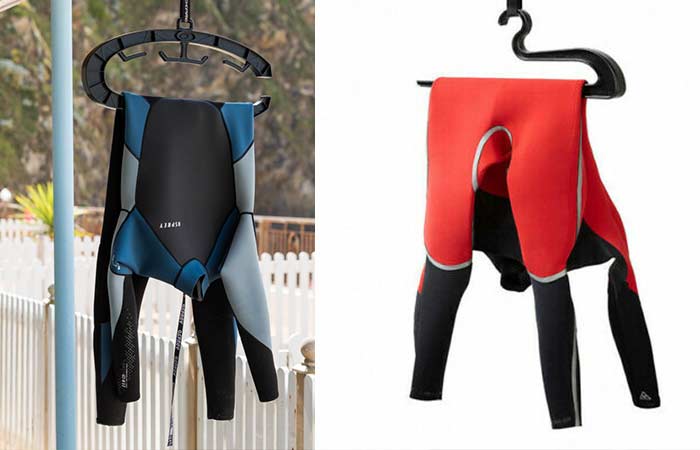How do Wetsuits Work? Do they keep you Warm & Dry?
Wetsuits are pieces of water equipment worn on the body either fully (from neck to ankle and wrists) or in parts such as shorts and vests. Just like cold-weather clothe, wetsuits do a simple yet all-important job of protecting your body from various hazards such as extreme cold, heat, pricks and even radiation.
Although wetsuits look quite simple, the science behind their construction and functioning is a bit intricate and it differs a lot from the other types warming clothes or body wear. In this article, we assess how wetsuits work to protect your body and the aspects of its construction that make it usable; layering, materials used, seams, zipping among others.
How exactly does a Wetsuit Work to keep you warm in/out of Water?
Wetsuits simply add extra layers to your skin. The layers reduce the amount of heat your body loses to the environment and they’re tougher than your skin thus protecting you.
The layers include;
- Comfort Layer: the innermost that gets into contact with your skin. It is usually smoother and softer to avoid discomfort.
- Heat-Reflecting Layer: Comes after the comfort layer. It is a thin layer made of some kind of heat-reflecting material to further increase your ability to retain body heat and stay warm. Some wetsuits may not have this layer.
- Neoprene Layer: It is the layer that constitutes the most part of a wetsuit construction. Depending on what type of wetsuit you are using, the neoprene layer can differ in elasticity and thickness. Some brands lack this layer because it causes allergic reactions in some individuals
- Outer Layer: It is usually made up of strong and durable material to protect your wetsuit from wear and tear.

The more the number of layers the more heat your body will conserve. This is mainly because many thin layers trap warm air in between them—and it’s this air that helps to keep you warm. This means one layer, no matter how fat, keep you warm because air will easily find its way out.
The whole concept stems from the fact that water carries heat away from your body about 25 times faster than air since it has a greater density (therefore a greater heat capacity).
Digging deeper into science, physics’ second law of thermodynamics (the science of how heat moves), heat tends to flow from hotter objects to colder ones nearby.
For instance, if you are sitting outside in a cold weather; your body temperature at 36 °C and that of the air around you at 10°C, heat will move from your body into the air. The result will be fast cooling of your body which most us will interpret as cold. The colder the water, the faster you lose heat.
Wetsuits are made up of many layers that trap warm air in between them and the heat has to flow through a series of warm “airlocks”. Air is mostly empty space, so these airlocks are effectively barriers that stop heat escaping, a process known as insulation. If it’s harder for the heat to escape, it’s a whole lot easier to stay warm.
Without the wetsuits, the water molecules around you will draw the energy or heat from your body at a faster rate than you will be able to replace it, without any protection. More aspects of wetsuits that make them work include;
Fitting the Body
Wetsuits are supposed to be tight on your body. They should be gently pressing against your skin to provide the needed insulation from the cold. They do this by trapping a thin layer of water between the suit and the skin. This thin layer of water gets warmed by the body and keeps you warm by preventing more water from coming into contact with the skin.
The fit of the wetsuit has to be tight (but not too tight) to provide the needed thermal cushion. The thin layer of water between the suit and the skin should just be enough to keep the heat from the body under the suit and around you. If it’s too tight, your body will be in contact with the whole mass of water and you’ll lose heat to it hence feeling cold. It’ll also be uncomfortable.
When the wetsuit is baggy, it’ll allow water from around you to constantly come into contact with your skin and take away heat. This way, you’ll constantly feel cold however long you stay in the way. For this reason, a tight wetsuit provides a better fit and is better and keeping you warm than a baggy one.
Protection Through Stitching
Water is a tricky substance to deal with especially when it comes to keeping it in one place. This is because it can seep through the tiniest of spaces to get to another destination. For wetsuits, the focus is always keeping water away from direct contact with the skin as much as possible.
This can be tough given that water can seep through the zip and stitching between different parts of the body such as the arms to the torso and so on. The most used types of stitching are the flatlock and blind stitching. They’re quite different and provide very different levels of sealing water from seeping into the body.
The flatlock type of stitching involves a needle going through both ends of the fabric to pass the thread through it. Even if it’ll be tightly-knit, water will find its way to the body through the holes created by the needle. This is okay for summer wetsuits where temperature control isn’t too much of a concern.
Blind stitching entails knitting two pieces of cloth together without the needle and thread don’t go through the fabric to the other piece of clothing. Essentially, glue is used to bind the two pieces of fabric together followed by blind stitching on either piece with the stitch also binding the pieces of fabric together. The use of glue or tape keeps water from seeping through the fabric making it better at keeping your body warm in cold water.
Prevents Evaporative Cooling
A majority of wetsuits are made from a combination of neoprene rubber laminated to nylon or other fabric. This way, the material can stretch to allow for a perfect fit and doing motions with your body without compromising the quality of the suit.
While this structure is great underwater, it exposes the user to evaporative cooling when above the water such as during surfing. Evaporative cooling refers to the cooling effect that occurs when the wind blows away the water layer directly above the wetsuit thus taking away the heat accumulated. As your suit will take up another water layer inevitably, you’ll keep losing heat in this way.
This phenomenon is prevented or controlled by using smoothskin neoprene rather than the fine mesh of neoprene. Rather than a mesh of neoprene through which water can escape, the neoprene rubber is smoothened out to allow very little water to move between the body and the environment around you. Losing heat is thus highly reduced.
You should, however, only consider going for a smooth skin neoprene wetsuit if you mainly engage in sports above the water surface such as kite surfing, skiing and others. If you swim or engage in other sports under the water, you won’t have any benefits from a smoothskin wetsuit.
Prevents Heat Loss Through Zips
The focus of wetsuits is to minimize the loss of heat to the water around you as much as possible. It can be hard when you have zippers/zips on the wetsuit. This is because it’s hard keeping out water when the zipper has so many perforations to keep it working.
One way to deal with this issue is using dryzips which are found on drysuits. These are meant to keep out water from getting to the body and work quite well. The problem with having dryzips is that they tend to tremendously increase the cost of the wetsuit with some cases even doubling it.
The other option which is much cheaper is add a batwing or zip baffle under the zip to keep the water out. This is a layer of material added under the zip to seal off the water. This way, you can still use a normal zip without incurring a lot.
Insulating the Body Through Radiation
Most warm forms of energy (heat) are in the form of infra-red energy. This is the same with the heat you emit from the body and the sun. Losing heat to the environment around you also occurs through loss of infrared rays. That’s true whether you’re in the water or outside.
To reduce this loss of heat when you’re wearing a wetsuit, some suits add a layer of titanium under the suit and in direct contact with the body. Titanium, being silvery and shiny, will reflect the infrared rays of heat back towards the body thus reducing the amount of heat you’ll lose in general. Copper is also used in the place of titanium owing to its high reflectivity.
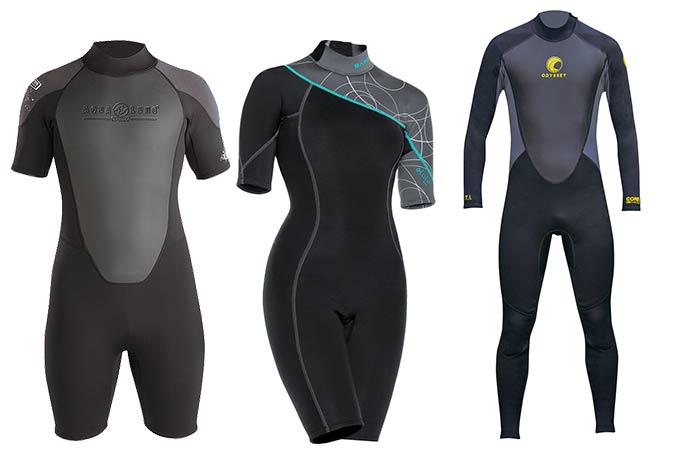
Allows for Easy Movement
One of the most common items used by triathlons is the triathlon wetsuit. This suit is supposed to provide the easiest way to move from land to water while keeping you cool on land and warm in the water.
To achieve this, triathlon wetsuits are made from smooth skin neoprene and nothing more. This allows for evaporative cooling while still trapping some heat under the suit to keep you warm when you’re in the water.
This suit has many other benefits including the reduction of friction both on and in the water, allowing for high levels of flexibility and making the user more buoyant. As such, you’ll float better and thus move faster in the water with this suit on.
These are the methods your wetsuit works and protects you. You can vary each factor by going for a thicker or thinner suit as you prefer.
Do Wetsuits keep you Dry?
No. Wetsuits don’t keep you dry. The keep you warm while wet. If you need to keep dry in the water, consider a drysuit.
More on Wetsuits
- What are Wetsuits Made of? Types & Top Brands
- Wetsuits Colors: Why Black? What is the Best Color?
- Wetsuit vs Dry Suit
- How to Properly put on a Wetsuit, Remove+ Dos & Don’ts
- What to Wear Under Wetsuit: Female, Men & Triathlons Undergarments
- How Tight/Fitting should a Wetsuit be?
- Wetsuit Thickness Guide + Temperature Chart
- How to Wash a Wetsuit + Best Cleaners, Shampoo & Soap
- How to Dry a Wetsuit + Best Drying Hangers & Racks
- Wetsuit Storage and Care Tips
Best Wetsuits


